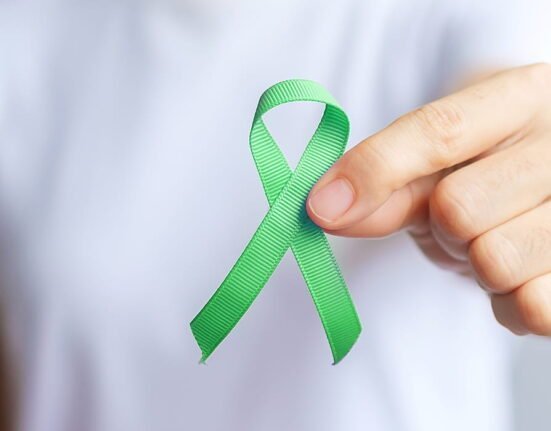Ever imagined walking through a pitch-dark alley with no knowledge of where it leads to? U might not be alone, millions of others are walking along with you, but all of them are also as unsure as you are. There are no side-ways; there seems no way out: you just need to keep walking with the hope of finding an exit. There are sudden explosive noises, the sound of bullets firing, some agonised groans around you, people praying, crying or angry shouts that interlude the silence in the alley, but the walk continues.
You feel tired, worn out, apprehensive, frustrated, angry and grieved all at the same time…but there is no respite. The walk continues with the constant fear of the unknown. You are left at the mercy of the forces that have led you into the dark alley with promises of a brighter future. What if this experience continues for 30 long years, and you have lost many of your loved ones in the alley, still struggling to keep yourself alive?
Growing Up in a State of Turmoil
This situation closely relates to what people of war-torn Afghanistan have faced for more than three decades. The country’s social, economic and cultural foundations have been largely impacted, which in turn has compelled them to live through exigent conditions daily. Today a lot is being speculated on the psychological impact of the Taliban takeover on the different sections of the Afghan community, but to comprehend their current mental state and reactions, it is important to understand their psychological distress as a function of the chronic trauma they have been collectively exposed to.
Since 1978, inveterate cycles of violence and strong-arming have left Afghans with not only physical but psychological wounds; the sense of having control over their life and destiny has largely dwindled, leading to widespread hopelessness. Young Afghans who were born during these conflicting times have accepted the mitigated state of affairs as the new norm, as they have never experienced otherwise. Hence, their choice is not between bad and best, but more between bad and better. Their story of shared trauma and pain is quite multifarious and convoluted.
Understanding the Shared Pain
The takeover of Kabul by the Taliban has brought up another difficult dimension to their pain and suffering. There is ubiquitous fear and apprehension amongst wide sections of the community as to whether their basic human rights will be crushed under the iron hands of the Taliban. The fear of violence and trauma has increased manifold not only from the Taliban’s oppressive ways but also from other competing powers like IS, as was greatly evident from the aftermath of recent twin explosions that rocked the Kabul Airport. Women, children do not feel secure anymore and are afraid that a strict version of Sharia will be imposed once again by the Taliban.
The terror, dread and panic of the Taliban rule during 1996-2001 is embedded in the minds of Afghan women, and they perceive the Taliban as an extremist and violent organisation. Back then, women were discouraged from attending school or working outside the home. They had to wear the all-enclosed burqa and be accompanied by a male relative whenever they went outside. The Taliban banned music, cut off the hands of thieves and stoned adulterers. Their harsh and militant interpretation of Islamic law made people feel stripped off their basic human rights.
The Plight of Afghan Women
Women as a community have suffered the most under the iron hands of this extremist group. The Taliban have been notoriously known all over the world for their violence and misogynistic attitude towards women. They believe that the woman’s face and contact make men corrupt, and hence women have to be kept in “purdah” and “gender apartheid” is a necessity to preserve the society. Based on this belief, the Taliban had not only banned women from their rights to education, work, healthcare and mobility, they also carried out harsh punishments for those women who failed to observe their rules.
Read More: Women Banned from NGO Work by Taliban: Yet Another Hammer on Women’s Rights
Failure to comply with the Taliban rules has led to several occasions of women being beaten up, injured, or even murdered in public. Women had been treated as commodities who did not have a wish or say of their own. Women were mostly confined to their homes, and this led to serious psychological problems in them, thus disrupting their family harmony. A 1998 survey of 160 women residents or former residents of Kabul found that 97 per cent showed signs of serious depression and 71 per cent reported a decline in their physical well-being.
The freedom that women regained after US intervention in 2001, which in turn led to many women getting educated, accomplishing their careers, and assuming important roles in the country, is now once again to be snatched away from them after the Taliban takeover. While the rest of the world are celebrating women and their success and achievements in this 21st century, women in this landlocked and mountainous country are intimidated by the fear of having to live a puppet’s life with no say in any matter, let alone living a free life.
Insecurity Amidst the Taliban Takeover
This is, however, not just speculation, as a few incidents were reported wherein the Taliban have demonstrated glimpses of their earlier thoughts and philosophies. Shabnam Dawran, Afghanistan’s National Radio Television news presenter, was, for example, told that she was not required at work as the “regime had changed”. In another instance, Khalida Popal, former captain of the Afghan women’s soccer team, urged players to burn their jerseys so that they do not get discovered and punished by the Taliban. Zarifa Ghafari, one of Afghanistan’s first female mayors, had to flee with her family from Kabul, hiding herself in the foot-well of her car. These and many other incidents happening after the takeover indicate that Afghan women are largely experiencing fear and panic today.
The other communities that are currently feeling threatened by the Taliban takeover are the country’s journalists, government workers, educators, human rights activists and the ethnic minorities. Frud Bezhan, an Afghanistan-based journalist, reports that many terrified residents of Kabul told him that they received threatening phone calls from Taliban saying they know their names and locations.
“To respect women’s rights, forgive those who fought them and ensure Afghanistan does not become a haven for terrorists as part of a publicity blitz aimed at reassuring world powers and a fearful population”.
ON 17 TH AUGUST, THE TALIBAN HAD VOWED
However the common man in Afghanistan is still unconvinced.

Shabnam Dawran
Afghanistan’s National Radio Television news presenter
Past history of the Taliban, new promises made by them to be less extremist, along with the reactions from the rest of the world to this new change: all together, these can result in a deep sense of insecurity, alarm, and fear of the unknown.
It is more like a recurrent pattern of looming darkness that threatens to destroy you in that dark alley, the moment your eyes start adjusting to the blackness. We human beings are adaptable; our survival instincts will help us adjust and accommodate to any adversity, but recurrent adversities can weaken us physically as well as psychologically. We get exhausted and feel helpless to fight. Stress is adaptive to a certain extent, but extreme and recurrent stress can deplete our resources. The Afghans today are fighting against this latter situation.
Afghans’ Desperate Flight from Their Homeland
Under the threat of Taliban oppression, many Afghans are trying to seek refuge in allied countries by fleeing from their own, Not everyone has the financial or social opportunities to escape. Many Afghans who would desperately want to leave are far from the reach of Kabul or any airport. While it is true that the US, UK, Canada and many other countries have committed to taking in a small number of refugees, it still means that Afghans would have to struggle against hard-nosed policies and anti-refugee sentiments in most of these countries to find sanctuary on the continent.
Thus, by and large, many Afghans might be experiencing painful emotions related to alienation, dejection and loss. It is like the feeling of being driven away from your own home and also not being heartily accepted anywhere else. This can, at its worst, lead to a severe crisis in the development of self and social identities in children and adolescents. Imagine that the people you were walking alongside in that pitch-dark alley are completely unknown to you; you doubt if they are with you or are pitted against you.
Persistent Mental Distress
A lot has been speculated and substantiated about the mental health impacts on Afghans over the past years. A report from the Ministry of Public Health (MoPH) of Afghanistan in 2018 indicates consistently high levels of mental distress, with 26% of the population suffering from functional impairment, while 46% are suffering without functional impairment.
“A huge gap in mental health resources and a lack of human resources, with expertise in prevention and treatment of mental disorders in the country.”
The WHO –AIMS report for Afghanistan in 2006 showed
Since then, several mental health projects were started by the Afghan government under a National Mental Health Strategy (NMHS) between 2011 and 2015, along with an attempt to include mental health amongst the basic package of public health. Unfortunately, a very small section of Afghans were able to reach out or benefit from these services. With women and children, the barriers to getting such help are even higher. Several factors count as obstacles: poor knowledge of mental health, services available, gender bias and discrimination, stigma, taboo, corruption and the ongoing civil unrest and most importantly, the very minimal attitude of Afghan people towards their distress and trauma due to chronic relation with stress and conflicts.
The Lingering Impact on Afghan Society
In a war-wrecked country like Afghanistan, trauma and distress are felt not at an individual level but at a collective level, often referred to as collective trauma. The trademark symptoms of individual trauma, such as dysphoria, anguish, vengefulness, panic and hyper-aggression, have possibly left the entire Afghan population envenomed with sectarian and ethnic mistrust, and with the certainty that only violence can end violence.
Feelings of hatred, mistrust and revenge are so strongly felt at the community level and a collective level, that coming out of it doesn’t seem to be a viable option. Today, when the Taliban promises a better reign and governance, people of Afghanistan are not in any frame of mind to trust them, as the fragmented, fractured memories of the endless trauma under their previous governance threaten them with further dire consequences. Especially selected sections of the community that had supported Americans and the earlier government to pull down the Taliban are in a “fight or flight” situation. They are afraid of revenge attacks from the aggressive Taliban. There is a race to save their own and their loved ones from impending death and torture, and as violence is the only behaviour rewarded so far, they might be ready to pay any cost to get their freedom. Hence, the war is far from over.
A Glimmer of Hope
The dark alley of uncertainty and dread continues, so does the walk towards freedom and survival. However, can the Afghans put together their courage and community feelings, hold each other’s hands and pace forward in the hope of new light? Can the Taliban truly moderate their ways for the sake of their people and make people believe and trust in them yet again? May women retain the lost and found freedom which they had been dearly nurturing for the past 20 years? Can humanity win over religious sentiments? Can violence be forgiven, and brotherhood be given a chance? All these and many more questions will be the future to answer, but for the time being, we can only pray and hope that mental and physical health services are made available to the citizens of Afghanistan to help them bear the brunt of times.













Leave feedback about this